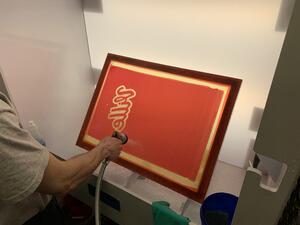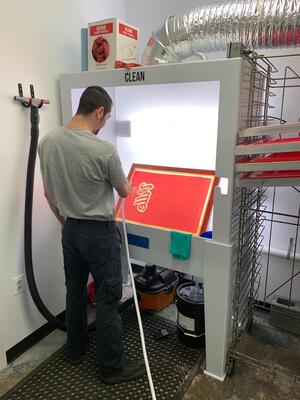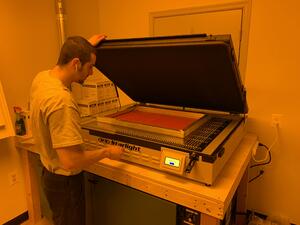 In 2015, I founded Capital Brandworks LLC to cater toward brands and businesses in the market for custom apparel and promotional products, and partnered with a local screen print shop to handle production of those sales. Things went well enough that we decided to purchase the print shop to bring production in-house, and in 2018, we merged the two businesses.
In 2015, I founded Capital Brandworks LLC to cater toward brands and businesses in the market for custom apparel and promotional products, and partnered with a local screen print shop to handle production of those sales. Things went well enough that we decided to purchase the print shop to bring production in-house, and in 2018, we merged the two businesses.
Our printed apparel looked pretty good, our customers were happy, and the print shop had been in business for 20 years. Because of this, I assumed processes were dialed in and best practices were being followed. I figured I would be able to observe production and learn the process by osmosis.
What I found horrified me — double stroking to achieve opacity, edges that weren’t crisp due to low tension screens and mesh drag, unnecessary print-flash-printing to again achieve opacity, etc. I didn’t know anything about the details of the production process, but my gut told me it wasn’t our printers that were the problem. They were adept at setting up jobs, registering screens, and operating within the system they were given. Something told me the issue was elsewhere, and it didn’t take much research before determining it was our screens that were the real problem.
 It was at this point I knew that we had to look outside ourselves for answers and make an investment in the training and education of our team. One of the best investments I made was attending SGIA’s "Screen Making: Basic to Advanced" workshop, taught by Art Dobie and Dave Dennings. The workshop didn’t just clarify exactly what we were doing wrong, but — more importantly — it showed us what to do about it and how to make the necessary improvements.
It was at this point I knew that we had to look outside ourselves for answers and make an investment in the training and education of our team. One of the best investments I made was attending SGIA’s "Screen Making: Basic to Advanced" workshop, taught by Art Dobie and Dave Dennings. The workshop didn’t just clarify exactly what we were doing wrong, but — more importantly — it showed us what to do about it and how to make the necessary improvements.
We took the knowledge gained from the workshop and ran with it. We took the class in April 2019 and in almost a year since, we’ve made major investments in our screen room and reclaim processes. This has included:
• A new light safe, climate-controlled screen room
• A new exposure unit
• A new screen coater
• A new drying cabinet
• Separating our reclaim process into dirty and clean washout booths to reduce contamination and the resulting pinholes
• Investing in the necessary tools such as a tension meter and thickness gauge
 After making the necessary investments in training, education, and equipment, and revamping our processes and workflows, our screens are vastly superior to what they were months ago. Not only does this result in better prints and happier customers, but we’re much more streamlined and efficient as well.
After making the necessary investments in training, education, and equipment, and revamping our processes and workflows, our screens are vastly superior to what they were months ago. Not only does this result in better prints and happier customers, but we’re much more streamlined and efficient as well.
Master the how and why of making screens for any job by registering for an upcoming "Screen Making: Basic to Advanced" workshop!